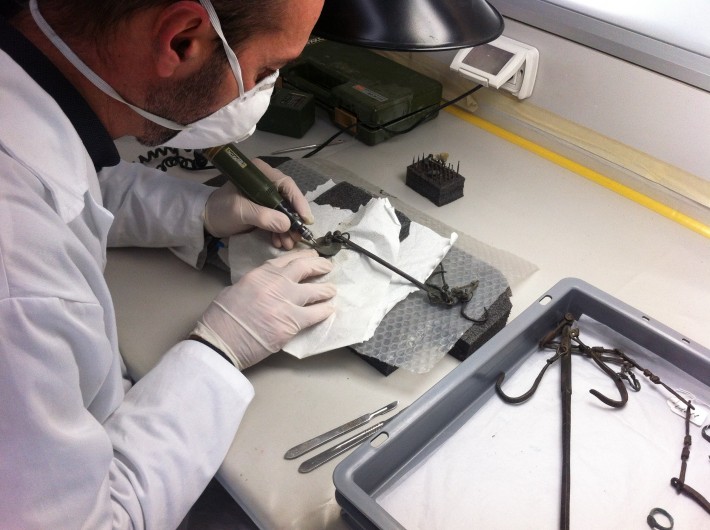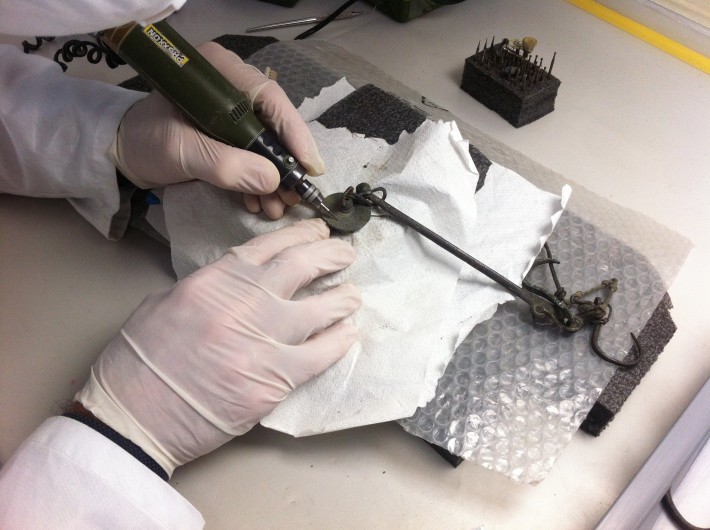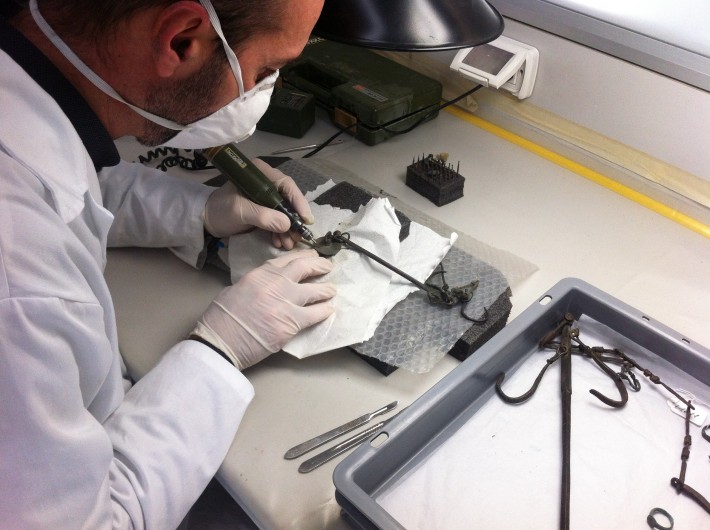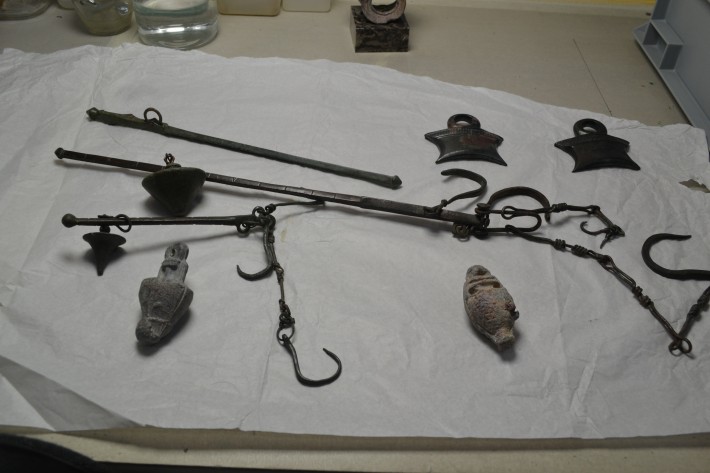This restoration was generously sponsored by Robert F. Smith.
One of man’s greatest inventions is undoubtedly weights and measuring systems, ranking among the creation of the wheel in the evolution of the civilization. Scales were commonly used in many production processes, including wool and fabric dyeing. In the ancient Roman world there were two predominant types of scales. The first type consisted of two arms of equal length generally called libra or trutina. The second consisted of a scale with two arms of different sizes called statera, a weighted cursor, called a aequipondium, and a plate or set of hooks where the load to be weighed was placed. The four scales of the Profane Museum belong to this second group, and are very interesting examples of ancient Roman Ponderaria tools. The very small amount of data we currently have on these tools does not allow us to date them decisively. They are most likely from the 1st or 2nd centuries AD, however a later dating may be possible. The scale was an indispensable object for the production of coins and was eventually depicted on coins themselves in the form of the cornucopia and scales. A weighing system was essential for use in trade and international currency exchanges. For these purposes, small precise scales were necessary. The scale has had a leading role in all trade since ancient times. Prior to the introduction of the first form of currency, negotiations were carried out by weighting bronze on the scale, aes et libra. In maritime or fluvial transport and commerce, weighing operations had to be done regularly in all ports. Ancient paintings and reliefs depict scenes of everyday life with scenes of weighing scales and weights.
Restoration Process Included:
- Cleaning and eliminating the corrosive salt bi-products
- Systematic cleaning of all the surfaces
- Stabilizing the residual products of corrosion
- Consolidation of the fractures and filling of existing lacunae (small holes)
- Protective final varnish
- Photographic documentation





No comments yet.